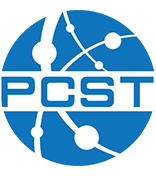Vitreous sounds
Author: Karina Lupetti – Federal University of São Carlos, Brazil
Co-authors:
Joel Andrade – Federal University of São Carlos
Antonio Brambilla – Federal University of São Carlos
Ariel Rodrigues – Federal University of São Carlos
Zildmara Rodrigues – Federal University of São Carlos
Rosemeire Silva – Federal University of São Carlos
Maxuel Souza – Federal University of São Carlos
Vitreous Sounds is the name of a project that comprises an orchestra of blind musicians among others with normal vision and theirs musical glass instruments developed by a glass maker. Brazilian popular musics were chosen to be played in special occasions such as science and cultural events. The musics are broadcast as background of UFSCar’s Radio Program called Vitreous Minute with short narratives about glass science. Since 2016, the Center for Research, Technology and Education in Vitreous Materials and Nucleus Ouroboros of Science Communication have a partnership to developed this project that was presented for hundreds of people . Musical instruments made of glass including various flutes, a chime and a wine glass organ and others idiophon musical instruments, such as caxixi, xequere and a berimbau were created since then. These pieces were made of borosilicate glass, molten in an oxidant flame and sculpted by the glass maker of the Chemistry Department of Federal University of São Carlos, by the other hand, the wine glass organ was tuned by adding water in the glasses. In July 2016, the glass instruments were played by the Ouroboros’s musician in a play of the group called Peter Q Pan. Q= Chemist. The orchestra, now with 8 members, is going on playing with a mixture of conventional and glass instruments, thinking about science, maths, chemical constitution of the materials and mainly the harmony and the beauty of the vitreous sounds. The propose is playing 30 minutes of Brazilian popular songs with the conventional and glass instruments, showing also the glass science during the presentation with talks, slides and experiments.
The author has not yet submitted a copy of the full paper.
Presentation type: Perfomance
Theme: Stories
Area of interest: Applying science communication research to practice
